How Do I Know If I Am Having a Panic Attack, and What Can I Do About It?
Having a panic attack can be really unsettling. Sometimes people have a sense of impending doom or think they’re having a heart attack. They may also find themselves going to the emergency room as a result. This article will help you identify symptoms of panic attacks as well as some strategies you can use to help.
What Is a Panic Attack?
A panic attack is defined as a sudden and intense feeling of fear that causes discomfort and reaches its peak in minutes. Panic attacks can have symptoms that are physical and emotional. During this time, you are likely to experience some of the following:
Racing heart
Sweating
Shaking
Shortness of breath
Feelings of choking
Chest pains
Nausea
Feeling dizzy, lightheaded, or faint
Chills or heat sensations
Numbness or tingling sensations
Fears of losing control
Fears that you are dying
These symptoms can start suddenly, and they can occur from being anxious or from out of the blue. These attacks can be scary but usually subside after a few minutes. After a panic attack has passed you may experience some lingering feelings of stress, worry, or uneasiness for the remainder of your day.
How Can I Get a Clear Diagnosis, So I Know What’s Happening?
Some individuals first learn about panic attacks after they’ve got to the emergency room for their symptoms. If you are looking for an opportunity to find out what’s happening, you can schedule an appointment with a mental health practitioner (therapist, social worker, or counselor). During your first few visits, your therapist will be gathering information they need about your history, symptoms, and current concerns. Ultimately, these mental health practitioners use the Diagnostic and Statistical Manual of Mental Disorders (DSM–5) to help them determine the correct diagnosis, if there is one at all.
Strategies to Help You Cope with Panic Attacks
Breathing techniques
Shortness of breath and heavy breathing can be symptoms of a panic attack and sometimes being able to slow down your breathing can help prevent the rest of the panic attack. Try to focus on taking deep breaths in and out slowly and allow the air to fill your chest.
Muscle relaxation techniques
This can have a similar effect to breathing techniques by disrupting the panic attack. Try to think about relaxing each of your muscles one at a time. Try starting with something small like hands or feet and then progressing to other larger muscles in the body.
Identify that it is a panic attack, and it will pass.
Try to remind yourself and acknowledge that this is a brief period of intense and uncomfortable anxiety, but it will pass and you will be okay afterwards.
Engage in an activity that activates one of your senses.
Doing something that activates one of your senses can keep you grounded and give you something else to focus on. The smell of Lavender or Chamomile has been shown to relieve anxiety and create calming sensations. Finding a physical object to focus on. When looking at this physical item think about how it feels, how it was made, what shape/color it is. If you are someone that has frequent panic attacks you can take a familiar item with you to help ground, you wherever you are.
The 5-4-3-2-1 technique
This is another kind of grounding technique that can help disrupt a panic attack. Look for 5 separate items that you can see and really focus on them. Listen for 4 different sounds and think about where they are coming from. Touch 3 objects and think about their textures. Identify 2 different smells that are around you. Name 1 thing you can taste.
Panic attacks can be uncomfortable, scary, and distressing. Being able to recognize when one is starting can help alleviate it. Identifying what a panic attack feels like for you, the types of situations or environments that can start one, and incorporating strategies can all be helpful ways in stopping one. Getting professional support is another step that can be taken to help you navigate these scary symptoms.
Search Our Other Blogs!
Interested in Counseling for Anxiety, Panic Attacks, Stress, or Worry?
If you’re a Marylander who knows that counseling is the direction you need to take, the therapists at LifeSpring Counseling Services are here to help. We offer online counseling services for mindfulness, depression, anxiety, trauma, and grief and loss. We also offer Brainspotting as a specialized service, and Brainspotting can be done online, too!
Here’s how you can get started! Online counseling for anxiety, panic attacks, stress, and worry aren’t the only services offered at our Maryland office
The counselors and social workers at our Maryland office also offer counseling services for trauma, grief and loss, boundary setting, communication skills, and difficult life transitions. We also offer specialized counseling services including Brainspotting and spiritually-integrated counseling. Because we are located next to several local universities, we also work with college students and international students.
Written by: Lindsay Fortier, LGPC
Photos: Liza Summer, Andres Ayrton, Alex Green, Mikhail Nilov, and Armin Rimoldi
Date of Download: 8/5/2021



